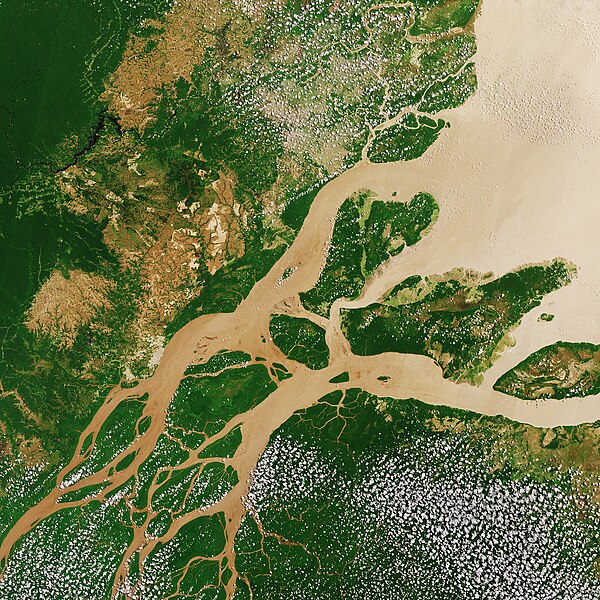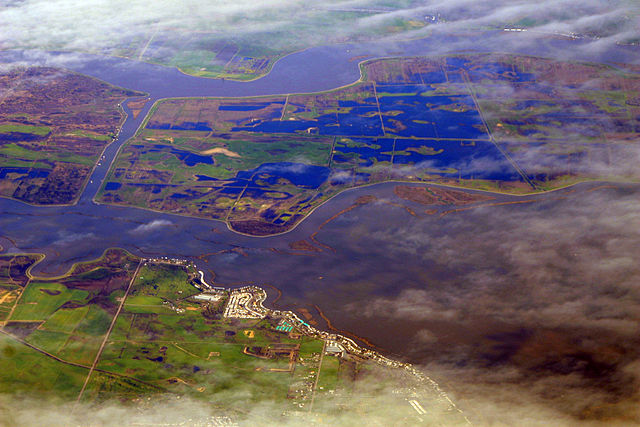In sedimentary geology and fluvial geomorphology, avulsion is the rapid abandonment of a river channel and the formation of a new river channel. Avulsions occur as a result of channel slopes that are much less steep than the slope that the river could travel if it took a new course.
Plumes of sediment enter the ocean from several mouths of the Mississippi River bird's-foot delta. This sediment is responsible for building the delta and allowing it to advance into the sea. As it extends further offshore, the channel slope will decrease and its bed will aggrade, promoting an avulsion.
A river delta is a landform shaped like a triangle, created by the deposition of sediment that is carried by a river and enters slower-moving or stagnant water. This occurs at a river mouth, when it enters an ocean, sea, estuary, lake, reservoir, or another river that cannot carry away the supplied sediment. It is so named because its triangle shape resembles the uppercase Greek letter delta, Δ. The size and shape of a delta are controlled by the balance between watershed processes that supply sediment, and receiving basin processes that redistribute, sequester, and export that sediment. The size, geometry, and location of the receiving basin also plays an important role in delta evolution.
Lena river delta
Satellite image of the Amazon Delta captured by NASA in 2005.
NASA satellite photograph of the Nile Delta (shown in false color)
Sacramento–San Joaquin (California) Delta at flood stage, early March 2009





